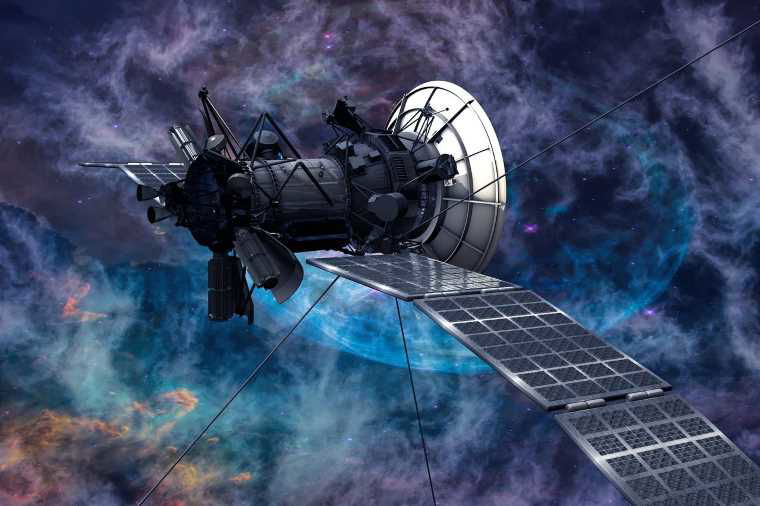The UK Space Agency has awarded University of Surrey scientists £250k to develop an extremely low orbit propulsion system that captures air in the uppermost reaches of the atmosphere and converts it to fuel. If successful, the newly designed thruster could keep satellites aloft for years at a time using only the power of the sun and the captured fuel.
While this is an initial viability study, the researchers behind the effort say that once completed their system could offer new capabilities in Earth observation, climate monitoring, and satellite communications.
New Extremely Low Orbit Propulsion System Builds on Existing Electric Propulsion Systems
Since the dawn of the space age, all satellites and space vehicles have been launched onboard traditional chemical rockets. However, once in orbit, most satellites require very little thrust to maneuver, opening up more alternatives than chemical propulsion.
For example, newly developed electric propulsion systems combine electric power and propellant to generate low-power thrust capable of moving satellites within their orbital plane. The advantages of these systems, which include ion thrusters and Hall thrusters, are twofold. First, a significant amount of the energy is generated by electric power, which can be collected with solar panels. Second, the highly efficient nature of the drives means that mission planners can reduce the amount of propellant needed to generate thrust.
In most cases, the propellant is a gas like xenon. However, some more exotic versions include an electric thruster that uses liquid metal and another that runs on water vapor. The Debrief also covered a solar electric thruster that uses the heat generated by concentrated solar to heat an onboard gas to create thrust. Still, all of these designs require the propellant mass to be carried onboard the satellite.
Now, the UK Space Agency says it is time to explore ways to collect both electrical energy and propellant mass while in orbit. Enter the extremely low-orbit propulsion system.
Pulling Gases Out of Thin Air
To fulfill the dream of a self-sustaining thruster that can collect both its electrical energy and its propellant while in orbit, the Surrey team says they have been exploring how to capture the gases in the thinnest parts of the Earth’s upper atmosphere and convert them to useable fuel. According to Dr. Mansur Tisaev, who recently completed his PhD at Surrey Space Centre, this resulted in the team creating their own specialized equipment and components that didn’t previously exist.
“We’ve been developing a cathode, or neutraliser, to work in electrostatic thrusters operating in the thin air found in ultra-low Earth orbit,” Tisaev explained. “By collecting and compressing the gases at that altitude, we can create a propellant flow that is ionised (i.e., transformed into a mix of charged particles) and accelerated using combinations of electric and magnetic fields, harnessing electrical power from solar panels.”
During the one-year term of the project, Tisaev will partner with experts from the Surrey Space Center. This includes propulsion specialist Dr. Andrea Lucca Fabris, astrodynamics expert Dr. Nicola Baresi, and spacecraft engineer Professor Craig Underwood. The team will also tap into the expertise of Dr. Olaf Marxen from the university’s Centre for Aerodynamics and Environmental Flow. Together, the team will develop conceptual designs for the prototype thruster, assemble orbital mechanics analyses, and perform propulsion testing and aerodynamic simulations.
New Thruster Could Aid Earth Observation and Faster Communications
According to Fabris, an extremely low-orbit propulsion system that can collect its own fuel during flight has numerous potential advantages, including extended mission times that could last days or even years at a time. The propulsion specialist also notes that satellites that operate closer to Earth have other advantages.
“There are benefits to flying in very low altitude orbits, like being able to operate Earth observation at much higher resolutions than offered at present,” Fabris explained. “It could also mean faster telecommunications, and it opens the door to new scientific discoveries about conditions in the ionosphere, which could help develop more accurate atmospheric models.”
Christopher Plain is a Science Fiction and Fantasy novelist and Head Science Writer at The Debrief. Follow and connect with him on X, learn about his books at plainfiction.com, or email him directly at christopher@thedebrief.org.

